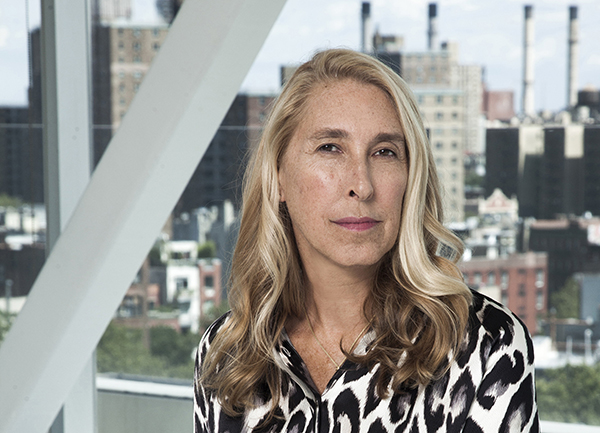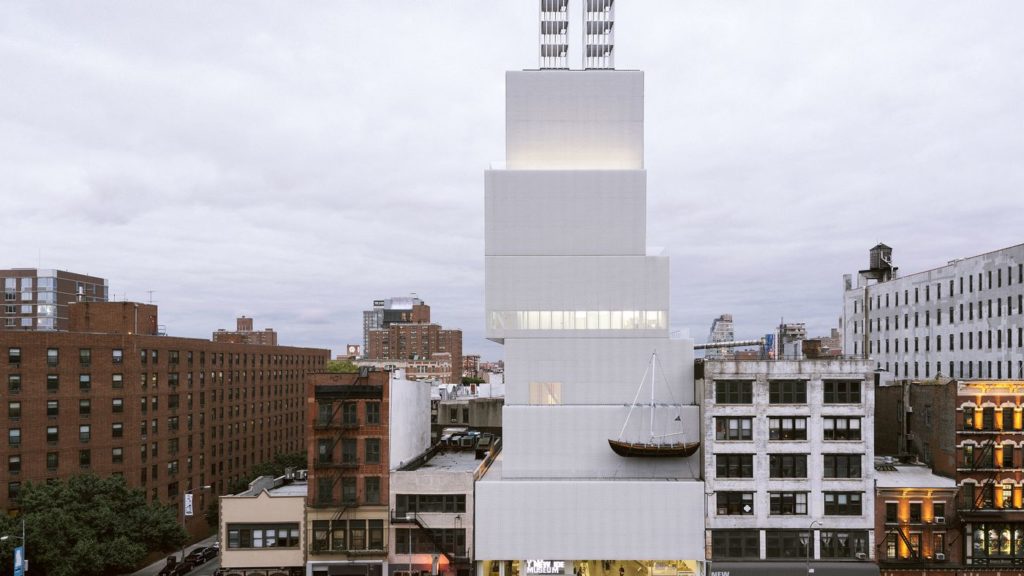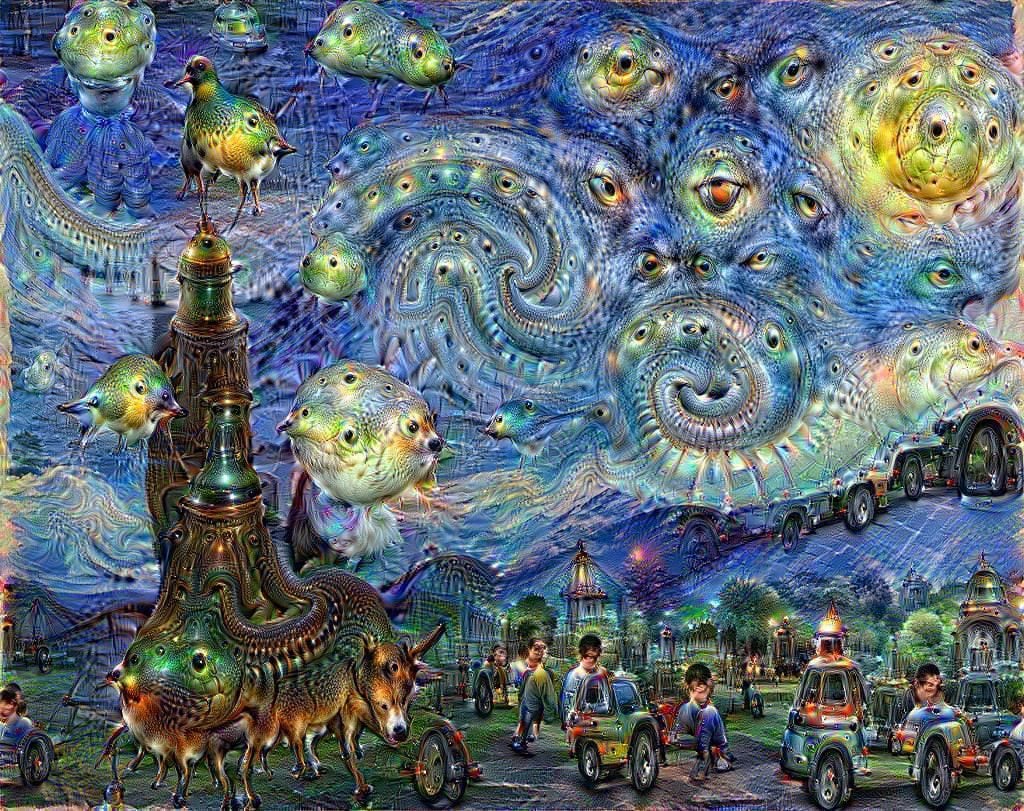Opinion
The Gray Market: Why the New Museum’s Union Reckoning Reflects a Much Bigger Problem (and Other Insights)
Our columnist zooms out from the New Museum staff's intent to unionize to the larger influence of Big Tech and big money on our world.

Our columnist zooms out from the New Museum staff's intent to unionize to the larger influence of Big Tech and big money on our world.

Tim Schneider

Every Monday morning, artnet News brings you The Gray Market. The column decodes important stories from the previous week—and offers unparalleled insight into the inner workings of the art industry in the process.
This week, drilling into the industry’s most consequential story about class and power…
On Thursday, my colleagues Ben Davis and Sarah Cascone reported that staffers at the New Museum have taken steps to unionize—and that management has taken steps to impede them.
Rather than view the conflict in isolation, though, I think it’s important to consider how it may be related to the New Museum’s increasing alignment over the last several years with some of the most distressing aspects of an art world and a wider world under the sway of technocapitalism.
For background, Cascone and Davis relay that a group of 74 non-supervisory staff members (excluding security and maintenance) formally notified the National Labor Relations board on Friday, January 4 of “their intent to affiliate with Local 2110, the same union that represents workers at New York’s Museum of Modern Art and Columbia University’s graduate students.” As for the central motivation, the New Museum Union website declares the following:
… fair compensation for all workers throughout the museum is essential to ensuring its diversity: salaries, wages, and benefits at the museum must be sustainable for everyone, regardless of the privileges afforded them by race, class, or gender.
In response, sources on staff at the New Museum say that the institution has since retained the services of Adams Nash Haskell & Sheridan, self-described “labor-relations strategists” whose landing page literally includes a “vulnerability quiz” to help employers gauge whether they should be interested in “urgent services” like “counter-union campaigns” and “union-avoidance training” or just regular old “strategic services” like “workplace issue assessment” and “the union-free privilege ®.” (Yes, that registered trademark is real.)
In short, I think it’s fair to say that the New Museum’s management isn’t exactly walking into this thing with the open-hearted enthusiasm of a teenage romantic.
According to museum sources, the consultants’ influence has already registered in numerous ways, each one falling on a spectrum ranging, in my opinion, from “disturbingly Kafka-esque”—see: setting one-on-one meetings to “attempt to identify key organizers and remind newly designated supervisors that they are obliged to be loyal to their employer”—to “ridiculously self-parodic”—see: calling an all-hands meeting to drag unions from every possible angle possible, including “something about how unions ruined Thanksgiving dinner.”
Necessary libel shields before I transition into analysis mode:
The New Museum did not reply to a query from my colleagues about whether certain staffers were suddenly reclassified as supervisors to exclude them from collective bargaining, but it did release the following statement: “A group of employees recently petitioned to form a bargaining unit. We want them to make a fully informed decision. In the meantime, we look forward to working with our staff to serve our audience and community.” Adams Nash Haskell & Sheridan did not reply to a request for comment.

The New Museum. Photo by Dean Kaufman, courtesy of the New Museum.
OK, let me try to contextualize this saga inside and outside the museum world.
The New Museum is currently in the midst of an $85 million capital campaign for an expansion that would double its size. As a worker, I would feel pretty damn offended to watch that kind of fundraising take place for a building if I didn’t feel I was being paid a sustainable wage to work inside it. I daresay it may even suck as much as, to quote a molten core of machismo temporarily given human form and housed in the room next to me during my first year of college, having “to watch the man you hate have sex with the woman you love.”
But it’s more than offensive. I would argue that the two are directly related. It’s not a coincidence that, particularly here in the US, the aggressive scaling-up of private philanthropy has tracked with the aggressive scaling-back of public funding and public programs. Entrepreneurs, financiers, and industrialists owe their New Gilded-Age returns in no small part to hundreds of millions of dollars in think-tank-backed lobbying efforts to warp tax and regulatory policies in their favor, at the expense of the average citizen.
The upshot of this strategy can be found in scholar Martin Gilens’s book Affluence and Influence: Economic Inequality and Political Power in America. Gilens’s research into how US legislative outcomes align with the philosophy of special interest groups concludes that the “preferences of the vast majority of Americans appear to have essentially no impact on which policies the government does or doesn’t adopt.” The political gains were instead siloed (surprise!) with the wealthiest Americans.
In Winners Take All: The Elite Charade of Changing the World, author Anand Giridharadas furthers this line of inquiry by identifying and dissecting a global construct he calls MarketWorld, a population of socioeconomic elites premising their lives, fortunes, and corporate strategies on the notion that social justice and financial profits always go hand in hand. The final chapter revolves around his trip to the final summit held by the Clinton Global Initiative, which comes off as a neoliberal festival of self-deception that allows him to crystallize the rules of contemporary philanthropy and politics as follows:
Inspire the rich to do more good, but never, ever tell them to do less harm; inspire them to give back, but never, ever tell them to take less; inspire them to join the solution, but never, ever accuse them of being part of the problem.
All of which leads us back to the New Museum.

A Vincent van Gogh-inspired Google Deep Dream painting. Image courtesy of Google.
If the tension between elite gains and collective losses wasn’t already visible enough in the tension between an $85 million capital campaign’s coexistence with workers’ actions to secure equitable compensation, then we can look to some telling information revealed by director Lisa Phillips on a recent episode of the In Other Words podcast.
There, Phillips, who I applauded only a month ago at a bizarre art-and-blockchain conference for highlighting the distinction between financial value and ethical value, mentioned that her institution generates about half of its annual operating income through earned income, meaning activities other than donations and endowment interest. She expanded on this strategy by saying the New Museum is “doing a fair amount of consulting and work for hire. Now we’re starting to do some partnerships with companies that are in alignment with our mission and interest. Particularly technology companies.”
The institution is increasingly acting like a technology company, too. Back in a 2016 piece titled “Silicon Values,” writer Mike Pepi flayed the New Museum over NEW INC., its arts-tech incubator dedicated to producing innovative yet marketable products in the broad sense of the term: objects for sale, web-based businesses, and more. Now, I don’t necessarily agree with every aspect of his critique, but the overarching framework is relevant here.
Pepi essentially argues that, even with the best intentions, NEW INC. marks the dawn of a new era for arts nonprofits—one in which they are willing, if not eager, to mimic the capitalist gauntlet rather than counterbalance or at least distance themselves from it. In the process, nonprofits contribute to what Giridharadas calls the “great risk shift” of our new winners-take-all economy, specifically by offloading even more uncertainty onto artists already abandoned to an unprecedented extent in the cruel wilderness of the marketplace. There, artists join so many workers of all types in the age of the “side hustle” and the “digital nomad.” Here’s Pepi:
Our much-celebrated regime of digital innovation has also brought about tremendous disintegration. As opportunity abounds, so does competition. An increasingly large number of people are self-employed, which is to say desperate and scrambling. They are liberated from institutions, but protected by none. Precarity is repackaged as a lifestyle choice for scrappy and energetic youths, romantic images of whom are ripped straight from the Horatio Alger tales of our new Silicon Valley titans. But there’s not much choice at all. Artists, writers, curators, performers, and everyone else under the new umbrella of “creatives” have never been so forced to rely on their own exertions.
Incidentally, Silicon Valley is arguably even more of a union desert than the American art world. The supposed romance of startup entrepreneurship, of the solitary genius changing the world, mirrors the supposed romance of the contemporary artist’s life, as well as the contemporary art worker’s life. The question, though, is whether it should. Staff and management at the New Museum now have to answer.
By no means am I arguing that NEW INC.’s founders or participants are responsible in any way for, or the least bit in agreement with, the labor conditions at the New Museum. I know and respect a number of people who have been involved with NEW INC. in various ways, and based on those relationships, I feel confident saying that everyone there wants all artists and art workers to be able to make an honest living doing what they do. As Julia Kaganskiy, the since-departed founding director of NEW INC., told the Wall Street Journal, “We’re seeing a trend of artists taking on for-profit practices because the nonprofit world is really not sustainable.”
But the initiative’s existence at the New Museum also signals that the museum’s leadership has, on some level, made peace with that trade-off. The resources being funneled into NEW INC. could theoretically be funneled into programs that reassert the value and values of artistic practice as a good in itself. Instead, NEW INC. shows the museum encouraging the arts to mold themselves to, in Giridharadas’s words, the “cutthroat souk” of Silicon Valley and not the other way around.
It’s not a far leap from that dynamic to convincing yourself that what is good for labor must hurt management, and that it’s perfectly legitimate to raise money for an architectural expansion while simultaneously spending money to kill a union in the crib. Both are forms of optimization for current market conditions.
Conditions at more than one museum may hang in the balance of this dispute. On In Other Words, Phillips noted that, after initial resistance from others in the arts, she and her colleagues now “get maybe 10 calls a day from other institutions asking, ‘How did you do that? We’d like to know more,’ to the point where I think we could start a consulting business.”
If this is a reflection of those institutions’ values shifting in the same way as the New Museum’s, then Adams Nash Haskell & Sheridan may have some new arts clients soon enough. Which, in my view, is reason enough for all of us, not just those on staff at other nonprofits, to rally to the pro-labor side of the New Museum standoff. Because there are a lot of questions I want museums to focus on, and none of them are included on a “vulnerability quiz.”
That’s all for this week. ‘Til next time, remember: When someone justifies their actions with, “It’s just business,” they’re pretending like there’s only one way to do business.